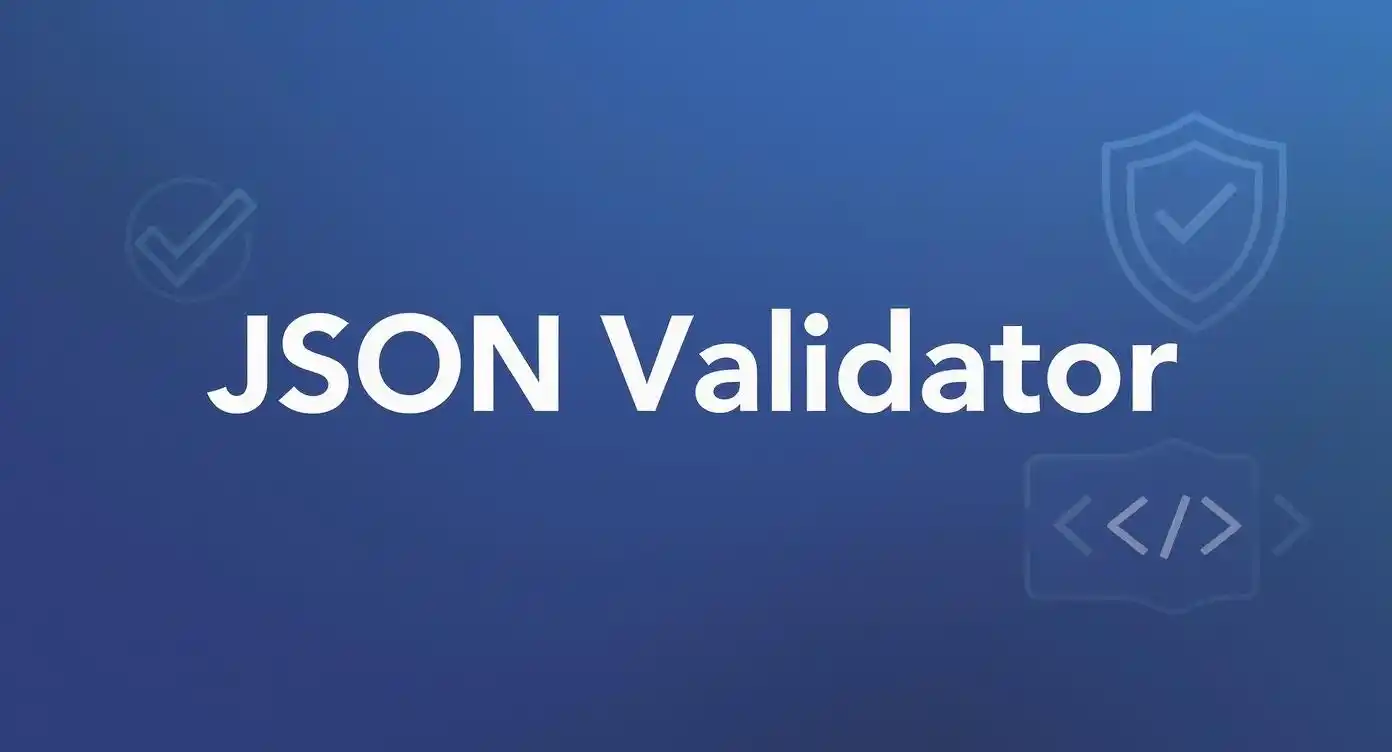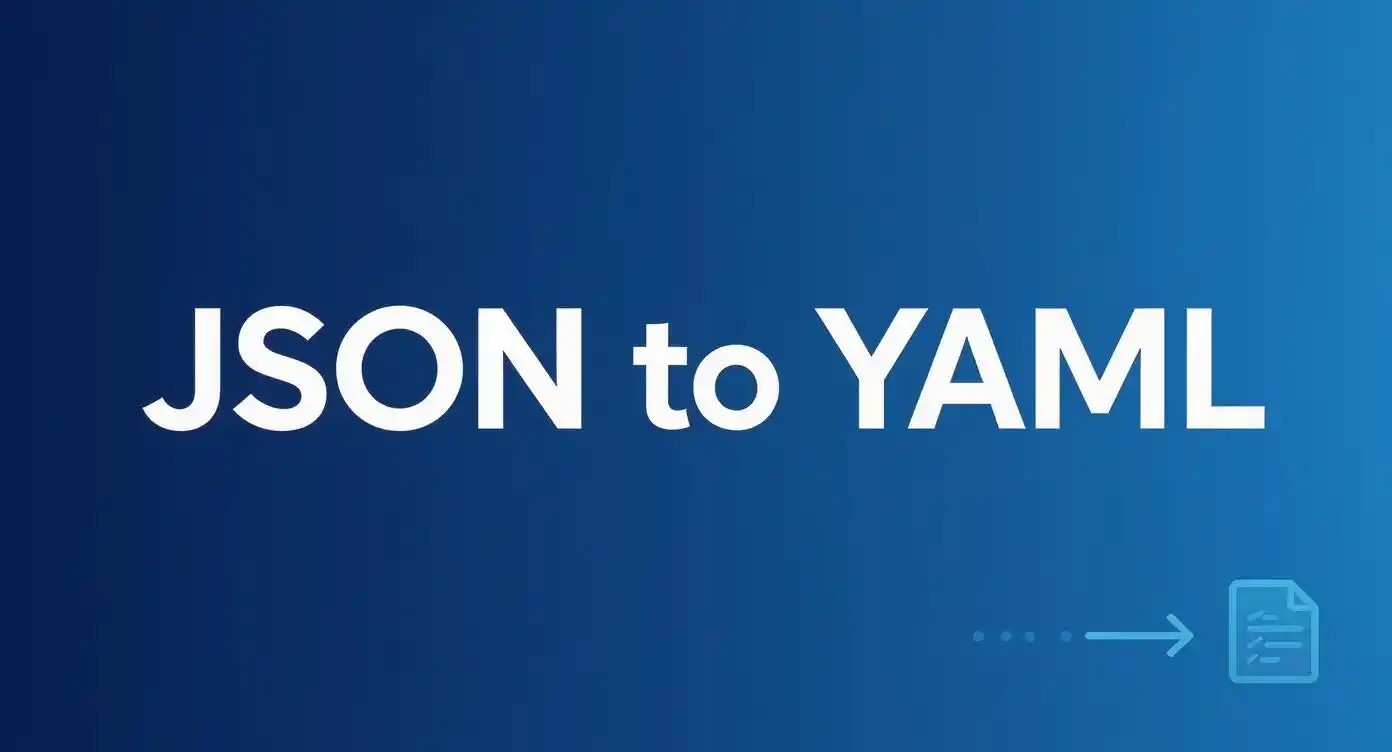JSON to YAML Converter
Transform JSON data into YAML format instantly with proper indentation and syntax validation
JSON Input
YAML Output
Your YAML output will appear here...
Key Features
Instant Validation
Automatically validates JSON syntax and provides detailed error messages for debugging.
Perfect Formatting
Generates properly indented YAML with consistent formatting and structure.
Export Options
Copy to clipboard or download as .yaml file for immediate use in your projects.
What is JSON to YAML Conversion?
JSON to YAML conversion is the process of transforming JavaScript Object Notation (JSON) data into YAML Ain't Markup Language (YAML) format. This conversion is essential in modern software development, particularly in DevOps, configuration management, and data serialization tasks. Our JSON to YAML converter provides a seamless way to transform your JSON data into human-readable YAML format while maintaining data integrity and structure.
The conversion process involves parsing JSON syntax and reformatting it according to YAML standards, which use indentation and whitespace to define structure instead of brackets and braces. This makes YAML more readable and easier to edit manually, especially for configuration files and documentation purposes.
Why Convert JSON to YAML?
Converting JSON to YAML offers numerous advantages for developers and system administrators. YAML's human-readable format makes it ideal for configuration files, documentation, and data exchange between applications. Unlike JSON's bracket-heavy syntax, YAML uses indentation to represent data hierarchy, making it more intuitive for humans to read and edit.
Configuration Files
YAML is widely used for application configuration, Docker Compose files, and Kubernetes manifests due to its readability.
Documentation
YAML's clean syntax makes it perfect for API documentation and technical specifications that need to be human-readable.
How to Use Our JSON to YAML Converter
Using our JSON to YAML converter is straightforward and requires no technical expertise. The tool is designed with user experience in mind, providing instant conversion with real-time validation and error handling. Follow these simple steps to convert your JSON data to YAML format quickly and accurately.
Paste Your JSON Data
Copy and paste your JSON data into the input textarea. You can also use the "Load Sample" button to see an example.
Click Convert
Press the "Convert JSON to YAML" button to transform your data instantly with automatic validation.
Copy or Download
Use the copy button to copy the YAML output or download it as a .yaml file for your projects.
JSON vs YAML: Understanding the Differences
JSON and YAML serve similar purposes in data serialization but have distinct characteristics that make them suitable for different use cases. Understanding these differences helps you choose the right format for your specific needs and explains why JSON to YAML conversion is often necessary in modern development workflows.
| Aspect | JSON | YAML |
|---|---|---|
| Readability | Good for machines | Excellent for humans |
| Syntax | Brackets and braces | Indentation-based |
| Comments | Not supported | Fully supported |
| File Size | More compact | More verbose |
Common Use Cases for JSON to YAML Conversion
JSON to YAML conversion is essential in various scenarios across software development, DevOps, and data management. Understanding these use cases helps you leverage the converter effectively and improve your workflow efficiency. Here are the most common scenarios where JSON to YAML conversion proves invaluable.
DevOps and CI/CD
Convert JSON configurations to YAML for Docker Compose, Kubernetes manifests, and GitHub Actions workflows.
- • Container orchestration
- • Pipeline configurations
- • Infrastructure as Code
API Documentation
Transform JSON schemas and responses into readable YAML format for OpenAPI specifications.
- • OpenAPI specifications
- • Swagger documentation
- • API schema definitions
Configuration Management
Convert application settings from JSON to YAML for better maintainability and readability.
- • Application configs
- • Environment settings
- • Feature flags
Data Migration
Convert data exports and backups from JSON to YAML for easier review and editing.
- • Database exports
- • Configuration backups
- • Data transformation
Best Practices for JSON to YAML Conversion
Following best practices ensures successful JSON to YAML conversion and maintains data integrity throughout the process. These guidelines help you avoid common pitfalls and optimize your conversion workflow for better results and maintainability.
Validate Input JSON
Always ensure your JSON is valid before conversion. Use our built-in validation to catch syntax errors early and prevent conversion issues.
Mind the Indentation
YAML relies on consistent indentation. Our converter handles this automatically, but be aware of spacing when manually editing converted YAML.
Handle Special Characters
Be cautious with special characters, colons, and quotes in string values. YAML may require different escaping than JSON.
Test Converted Output
Always validate the converted YAML in your target application to ensure compatibility and correct parsing.
Advanced Features and Tips
Our JSON to YAML converter offers advanced features that enhance your conversion experience and provide additional functionality beyond basic transformation. These features are designed to improve productivity and handle complex conversion scenarios effectively.
Converter Features
Productivity Tips
Troubleshooting Common Issues
While our JSON to YAML converter is designed to handle most conversion scenarios seamlessly, you might occasionally encounter issues. Here are common problems and their solutions to help you get the most out of the conversion tool.
Invalid JSON Error
Problem: The converter shows "Invalid JSON" error message.
Solution: Check for missing commas, unclosed brackets, or unquoted strings. Use a JSON validator to identify specific syntax errors.
Special Characters Issues
Problem: YAML output contains unexpected character escaping.
Solution: This is normal behavior. YAML automatically escapes special characters to maintain data integrity.
Large File Performance
Problem: Conversion seems slow with very large JSON files.
Solution: Consider breaking large files into smaller chunks or use the download feature instead of copying large outputs.
Security and Privacy
We prioritize your data security and privacy when using our JSON to YAML converter. Understanding our security measures helps you use the tool confidently, especially when working with sensitive configuration data or proprietary information.
Client-Side Processing
All JSON to YAML conversion happens in your browser. Your data never leaves your device, ensuring complete privacy and security.
No Data Storage
We don't store, log, or transmit your JSON or YAML data. Everything is processed locally and discarded when you close the browser.
Frequently Asked Questions
Can I convert large JSON files?
Yes, our converter can handle large JSON files. However, very large files might take longer to process. For optimal performance, consider breaking extremely large files into smaller chunks.
Is the converted YAML valid for all applications?
Our converter generates standard YAML format that should work with most applications. However, some applications may have specific YAML requirements, so always test the output in your target application.
Does the tool work offline?
Yes, once the page is loaded, the JSON to YAML conversion works completely offline since all processing happens in your browser.
Can I convert YAML back to JSON?
This tool specifically converts JSON to YAML. For reverse conversion (YAML to JSON), you would need a separate YAML to JSON converter tool.
Are there any file size limitations?
There are no artificial size limits imposed by our tool. The limitation comes from your browser's memory capacity. Most modern browsers can handle files up to several megabytes without issues.
Additional Resources
Enhance your understanding of JSON and YAML formats with these authoritative resources. These links provide comprehensive documentation and specifications for both data formats.






